Blog
now browsing by category
Parser

In the evolving tapestry of video games, the intersection of gaming and coding has unveiled a unique niche where creativity meets logic. The 18th fragment, “Parser,” serves as a tribute to this fascinating confluence, offering players a minimalist graphics engine within Unity to manipulate a 64×64 grid through a custom scripting language.
This concept of minimalist engines and in-game programming isn’t new but stands on the shoulders of giants in the gaming world. Minecraft’s introduction of redstone was revolutionary, transforming the game into a sandbox not just of physical construction but of electrical engineering. Redstone allows players to build intricate logic circuits, culminating in the creation of functional computers within the game itself. This feature exemplifies how minimalist elements can foster an environment ripe for learning and innovation, demonstrating the principles of logic and computing in a tactile, engaging manner.
John Conway’s Game of Life, a cellular automaton, is another landmark in minimalist design sparking complex outcomes. With simple rules affecting the state of cells on a grid, it creates patterns that evolve in surprisingly complex ways. The Game of Life teaches players about the emergence and the unpredictable beauty found in simplicity, inspiring countless individuals to experiment with the concept of cellular automation.
Space Engineers expands on the theme of in-game programming by allowing players to script computers that control various aspects of their spacecraft and bases. This not only adds depth to the gameplay but also introduces players to the practical applications and challenges of programming in an immersive, interstellar setting. It’s a brilliant fusion of game design and coding education, wrapped in the engaging context of space exploration.
Beyond these examples, numerous other games have incorporated programming elements as a core part of the gameplay. Titles like “Robocode,” “Screeps,” and “Human Resource Machine” challenge players to use code to solve puzzles or battle other players’ creations. These games transform abstract coding concepts into tangible, interactive experiences, making learning both accessible and fun.
“Parser” is a continuation of this rich tradition, simplifying the concept to its essence—a minimalist graphics engine and a 64×64 grid. It encourages players to engage directly with the logic and creativity of coding, stripped of any distractions. Like its predecessors, “Parser” is more than a game; it’s an educational tool, a creative outlet, and a testament to the power of minimalist design to foster deep engagement and learning.
Grey Box

Stripping away the layers of graphic detail that define modern gaming, this fragment challenges players to navigate a space devoid of visual cues, armed only with indicators of their position, rotation, and the identity of objects beneath their cursor.
“Grey Box” operates on the principle of implied presence, a concept where the essence of an environment is suggested rather than explicitly depicted. The soul of a space—its atmosphere, emotion, and narrative potential—can be conveyed through minimalistic means, and demonstrates how the absence of visuals can, paradoxically, make the environment more vivid in the player’s imagination.
Environmental storytelling is the art of imbuing spaces with narrative significance without relying on direct exposition.
Creating an environment in the absence of visual detail requires a deep understanding of the other elements that make spaces meaningful. Sound, texture (conveyed through descriptions), and spatial design become paramount. “Grey Box” challenges game designers to think beyond the visual, to consider how spaces feel, how they sound, and how they are navigated. It’s an exercise in using constraint as a creative tool, focusing on the core elements that make environments immersive and engaging.
Museum Of Faces
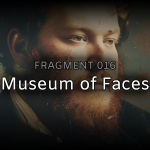
This digital museum, with its ever-changing portraits, offers a unique canvas for exploring the multifaceted nature of human existence, the burdens we carry, and the value we assign to our memories and experiences.
The museum serves as a liminal space, a threshold between the known and the unknown, the conscious and the subconscious. It’s a place of transition, allowing players to explore the depths of their own psyche as they navigate through the shifting gallery of faces. These changing portraits symbolize the fluidity of identity and the impermanence of the self, challenging players to consider their own evolving nature.
Central to the experience is “the weight,” a large cube that significantly slows the player as they progress through the museum, especially as they gather coins—symbols of value, achievement, or perhaps the baggage of material desires. This mechanic poignantly illustrates how our pursuits and the values we attach to them can become burdens, slowing our journey through life. It prompts players to reflect on what truly holds value and what weighs them down, inviting a contemplation of balance between aspiration and contentment.
“Museum of Faces” is more than a game; it’s a metaphor for the journey through life, filled with changing faces, shifting identities, and the constant negotiation between the weight of our desires and the pursuit of meaning. The fragment invites players to ponder the existential questions that define us, urging them to consider the legacy of their choices and the paths they tread in the pursuit of fulfillment.
Relics
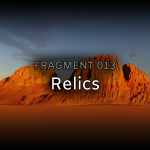
Nostalgia plays a powerful role in our relationship with technology. As players interact with this fragment, they are transported back to different points in their personal and collective digital histories. These technologies, once cutting-edge, now serve as reminders of how rapidly innovation reshapes our world. The tactile experience of inserting a disk or a CD, the distinct sounds they make – all contribute to a sense of longing for simpler times, when digital life was more tangible and perhaps more comprehensible.
One of the stark realities highlighted in “Relics” is the impermanence of data. Each form of storage, from magnetic tapes to optical discs, is prone to degradation over time. This data decay is a reminder of the transient nature of digital information. Floppy disks demagnetize, CDs succumb to disc rot, and hard drives fail. These issues pose significant challenges, particularly in preserving important historical and personal data. As technology progresses, the fragment raises questions about the longevity of our current storage methods and the potential loss of significant digital heritage.
Looking to the future, “Relics” encourages us to consider the next evolution in data storage. With the advent of cloud computing and advances in solid-state technology, we are moving towards more reliable, efficient, and expansive storage solutions. However, this shift also raises concerns about data security, privacy, and the increasing complexity of managing vast amounts of information. The trend towards intangible cloud storage also distances us from the physicality of data, changing our relationship with digital content.
“Relics” is more than a game; it’s a reflection on the rapid pace of technological advancement and our relationship with digital tools. It celebrates the nostalgia associated with obsolete technologies while acknowledging the challenges they present. As we move towards more sophisticated storage solutions, it’s important to consider the lessons learned from past technologies – both their strengths and their vulnerabilities. By doing so, we can develop future storage methods that are not only more advanced but also more mindful of the lessons from our digital past.
In essence, “Relics” invites players to embark on a journey through the history of data storage, to reflect on the ephemeral nature of technology, and to ponder the future of our digital lives. It’s a reminder that while technology continues to evolve, our human connection to these ‘relics’ endures, shaping our memories, our history, and our future.
Conference
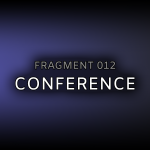
The concept of what constitutes game content has evolved significantly over the years. Special editions of games often include physical items – art books, figurines, or maps – that extend the gaming experience beyond the screen. These editions suggest that content is not confined to digital interactions but encompasses a broader ecosystem of tangible and intangible elements that enrich the player’s experience. “Conference” builds upon this idea, pushing the envelope further by integrating real-world interaction directly into the gameplay.
In recent years, the impact of cosmetic content in games has become increasingly prominent. As explored in various studies, including those archived at the National Center for Biotechnology Information, cosmetic items, though not affecting gameplay mechanics, significantly influence player engagement and satisfaction. They offer a form of self-expression within the game, allowing players to personalize their experience and create a deeper connection with the game world. Conference echoes this concept of personalization, though in a non-visual form, by engaging players in a personalized conversation, adding a layer of individualized experience to the game.
The essence of Conference also touches upon the importance of human interaction in games, a theme prevalent in multiplayer and social gaming. As detailed in studies and articles such as those from the University of Wisconsin-Milwaukee and Builtin, social interactions in online gaming create communities, foster relationships, and provide significant psychological benefits. The fragment Conference leverages this aspect by transforming a simple phone call into a platform for interaction, reminiscent of the communal experiences found in multiplayer games.
Conference aims to be a commentary on the evolving nature of game content. It challenges players to think beyond the screen and consider the diverse elements that constitute a gaming experience in the digital age. By integrating a real-world interaction into its fabric, the fragment highlights the potential for games to encompass a wide range of experiences – from the tangible collectibles of special editions to the intangible connections formed in online communities.
Distance
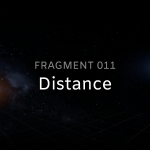
In the world of video game design, the concept of distance plays a crucial role in shaping player experience. This fragment offers a unique opportunity to reflect on how distance, scale, and the sense of isolation are represented and perceived in games.
For a moment let’s talk about Fast travel. On one hand, it’s a convenient tool that respects the player’s time, especially in games with vast worlds like “Skyrim” or “The Witcher 3.” On the other hand, as highlighted in discussions on platforms like This great article by Brendan Calwell, fast travel can diminish the perceived scale and majesty of a game world. It can make a sprawling landscape feel compressed, turning a potentially epic journey into a series of instant transitions. This convenience, while practical, sometimes robs players of the immersive experience of traversing great distances and discovering the unexpected wonders along the way.
Space games, in particular, face the challenge of representing the unimaginable vastness of the cosmos. While some titles, like EVE Online, opt for a more condensed or stylized approach to make gameplay enjoyable, others like Starfield strive for realism, attempting to capture the sheer scale of space. However, truly representing the astronomical distances in a way that is both accurate and engaging for players is a significant challenge. Games often have to find a balance between realism and playability, as an entirely realistic portrayal of space travel might involve long periods of emptiness and inaction, which can test player engagement—and even lead to unintended feelings of isolation.
This sense of isolation is important to consider in regards to distance in games. In games that emphasize the scale of their world, such as No Man’s Sky or Elite Dangerous, isolation can become a powerful narrative and emotional tool. It can create a sense of awe at the grandeur of the universe, but it can also evoke feelings of insignificance and solitude. This isolation can lead to moments of introspection and self-reflection, allowing players to experience a deep connection with the game world that is both humbling and enriching.
The journey through the solar system in this fragment is not just a traversal of space, but a meditation on distance and scale in game design. It challenges the conventions of fast travel and condensed spaces, inviting players to experience the true vastness of our solar neighborhood. This fragment stands as a reminder that sometimes, the journey itself is as important as the destination, and that the perception of distance and scale can profoundly shape our gaming experience.
In embracing the vastness, both in space and conceptually, this fragment and games like it ask us to consider our relationship with distance and isolation. They encourage us to ponder the impact of these elements on our perception of the game world and our place within it. As game design continues to evolve, the exploration of these themes will undoubtedly lead to new innovations and experiences, expanding the boundaries of how we interact with and understand virtual spaces.
Sprint
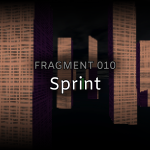
In the realm of video games, speedrunning represents a fascinating and unique subculture, a form of play that extends beyond the intended boundaries of gameplay. The accompanying fragment, designed with speedrunners in mind, serves as a testament to the intricate artistry and competitive spirit of this community. It invites players to not just play the game but to master and redefine it.
Speedrunning, at its core, is a playstyle that challenges participants to dissect a game’s mechanics, to exploit its weaknesses, and to push the limits of what is possible within its digital confines. Speedrunners engage in a deep, almost symbiotic relationship with the games they run, often knowing every pixel and frame with an intimacy that surpasses even the developers’ understanding.
This essay by Jacob Bruett on video game speedrunning as a unique form of play emphasizes the creative and exploratory nature of this practice. Speedrunners are not just players; they are innovators and problem-solvers. They deconstruct the game to its fundamental components, seeking routes and strategies that shave off seconds or exploit glitches, transforming the game into a playground of possibilities.
Speedrunning is not monolithic; it is multifaceted, with various categories and challenges that appeal to different kinds of players. One such challenge is the ‘low%’ run, where players attempt to finish the game by collecting as few items as possible. This type of run often requires an entirely different approach to the game, emphasizing skill and precision over power-ups or upgrades. It’s a testament to the player’s raw ability and understanding of the game’s mechanics.
These unique challenges highlight the resourcefulness of speedrunners. As discussed in speedrun forums and analyses, such as those found on Speedrun.com and in this exploration of speedrun studies by Medium’s David Howard, these challenges are a form of metagame. They extend the game’s life and appeal, creating new experiences and narratives that are often as engaging as the original game itself.
Looking ahead, the future of speedrunning is as dynamic as the practice itself. With the advancement of gaming technology, including the potential of mind-controlled games, speedrunning will continue to evolve. New games will bring new challenges, and speedrunners will undoubtedly rise to meet them, finding innovative ways to break records and redefine the parameters of play.
The fragment presented here, designed with speedrunning in mind, is a tribute to this relentless pursuit of excellence. It offers a playground for speedrunners to test their skills, to compete, and to contribute to the rich tapestry of gaming culture. It’s a celebration of the speedrunning spirit – a spirit of determination, creativity, and an unyielding desire to push beyond the limits.
On game design, creativity, agency, and The Beginner’s Guide

I recently played The Beginner’s Guide by Davey Wreden. It left such an impression that I wrote this piece exploring the theories behind game design and playability. The letter below contains spoilers for the game. Please play the game first.
Read the rest of this page »
It’s time to have the book cover conversation

I’ve rubbed elbows with self-published, independent-published, and even vanity-published authors on a daily basis. I’ve gone to conventions and browsed the author’s alley, and I’ve spent countless hours scouring the web for new reads. One thing influences my decision to buy more than anything else—the cover.
Read the rest of this page »

